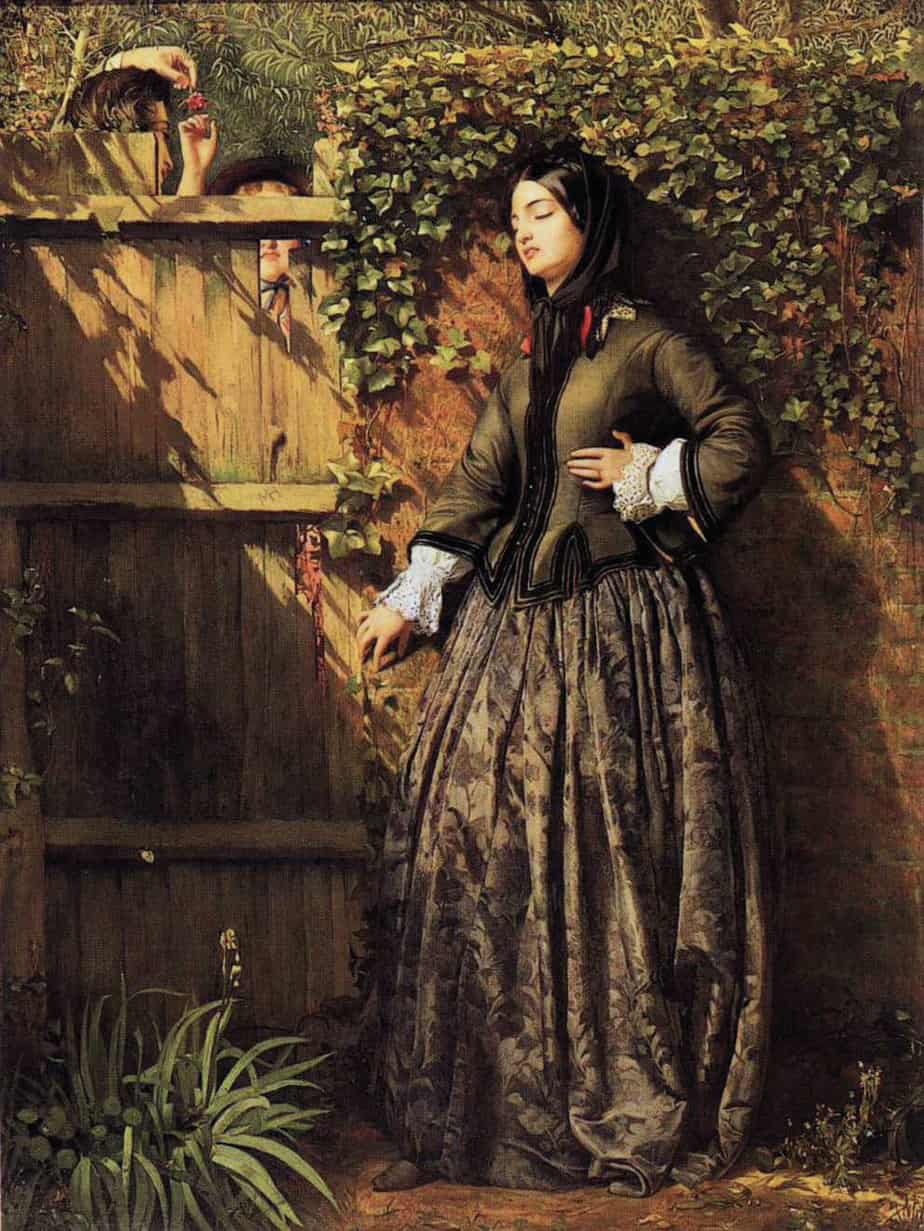“Fiction” is a short story by Alice Munro (2009). From the title itself we might expect it to be metafictional. Sure enough, there are constant reminders to consider the role of fiction in our lives.
I will tell you everything, and if I don’t tell you it means I don’t trust you or I have a secret. It doesn’t mean I choose to keep certain things to myself because they are private. Privacy is the endangered species in between two extremes of secrecy and transparency.
Very often we don’t go elsewhere because we are looking for another person. We go elsewhere because we are looking for another self.
Esther Perel
The following interview, from 2006, offers some extra insight into the story, and why Munro may have written it. For a few years she owned a bookstore and people used to come in to the store and tell her, as a matter of pride, two things: They don’t read Canadian books and they don’t read fiction. However, she also says that is no longer the case.
I don’t want to map Munro’s fictional Joyce onto Munro herself, but there are some parallels:
Like Joyce, Munro divorced her first husband during the hippie revolution. Though unlike Joyce, Munro explains that ‘everyone was doing it’ during this era and people who didn’t seemed ‘almost apologetic’ for staying together. Joyce does not feel like that at all. She feels grief and anxiety.
COMMENTARY ON THE PLACE OF FICTION IN OUR LIVES
Alice Munro is working on several diegetic levels here, and we receive several messages about the role of fiction: Fiction maps onto real life and helps us to process our own lives. The following two sentences, spanning separate paragraphs, suggest that fiction is more truthful than anything else:
You can’t believe it.
That’s why it’s true.
ON SHORT STORIES IN PARTICULAR
Munro, celebrated short story writer who hasn’t also published novels, offers the following as part of her main character’s close third-person narration:
How Are We to Live is a collection of short stories, not a novel. This in itself is a disappointment. It seems to diminish the book’s authority, making the author seem like somebody who is just hanging on to the gates of Literature, rather than safely settled inside.
It’s impossible not to see that as commentary as from Alice Munro herself.
ON FICTION VS NON-FICTION
First, the set up:
She often remarks that she and Matt are seldom alone together except in bed. “And then he’ll be reading something important.” While she is reading something unimportant.
Later, the reveal:
Joyce’s erudite university professor husband is mildly dismissive of fiction. He prefers to read non-fiction and to have a rant. For him, reading is a dick-waving contest (my words, not Munro’s).
Third, the thematic significance:
Immediately after their brief conversation in bed, Joyce reads fiction which to her becomes non-fiction, thereby showing the husband up to be unfairly critical of fiction.
This is the reader’s own Anagnorisis. This story asks us to consider our own personal relationship to fiction, in fiction’s various forms:
- What are the fictions we concoct about ourselves, and other people’s reactions to us?
- What are the fictions we concoct about others, via imaginary conversations and or half-forgotten settings? (Across her stories, Munro shows that memory is neither fallible nor complete.)
- Why do we take an instant dislike to certain people? Is it because they remind us of our past? Which part of our past? Can we pinpoint it and move past our prejudices?
- How do we read fiction? What role does fiction play in our lives? Alice Munro describes reading itself when she portrays a woman (knowingly) reading fiction who nonetheless layers her own life over top as she reads, synthesising aspects of her own past and present. This is a very interesting example of side-shadowing technique.
The final sentence is a punchy line which lampoons the way in which certain literary types tend to view short stories — as incapable of achieving adequate depths for a reader.
But if you’re here, reading this, you’ll know that’s not the case. What I find remarkable about short stories: Looking back on a short story, say, 10 years after reading it, the images and memories of reading that story are indistinguishable from having read another work of novel length. When it comes to creating imagery, word count is beside the point.
STORYWORLD OF “FICTION”
Like Mad Men, this is a story which starts before the counterculture of the 1960s, and maps the arcs of characters either embracing the new era (Peggy and Jon) or refusing to change until they have to (Don and Joyce).
MUSIC
“Fiction” is about a music teacher, so within the text, Alice Munro gives us a specific piece to set the mood. I learn that the title means “Songs on the Death of Children”, which changes things somewhat for an English speaker. Symbolic, much? This is our narrator putting to rest her memory of a child once associated with a difficult time in her own life.
In the interview above, Alice Munro describes the 1960s countercultural movement as a wave which plunged her back into feeling like an 18-year-old. She was actually 30 at the time. She was raising two daughters and had lost another. By any definition, Munro was an adult. She explains that back then, 30 was a difficult time. She says it’s probably not so difficult anymore. (I’d say it’s shifted up to 40.) Munro seems to feel that the liberating movement that happened in the 1960s is what forced her to grow up: Before then, women weren’t expected to want anything outside marriage and children, and so they didn’t allow themselves to want that.
Having your own independent desires, then, is a vital part of becoming a fully-realised adult, no matter your age.
“Fiction” is divided into two parts. Part One covers the early part of Joyce’s life, focusing on the end of her first marriage and the time immediately following. Part Two skips forward to her subsequent marriage in which we at first would define as happy. But small unhappinesses eventually reveal themselves to us, reassuring us that there’s no such thing as perfect, unadulterated happiness, partly because the past can never be separated from the present. Likewise, fiction can never be fully separated from real life.
STORY STRUCTURE OF “FICTION”
PART ONE OF “FICTION”
ON CHEATING
Before we were old enough to experience a romantic relationship we learned how cheating works, right? We learned it from Home & Away and from Neighbours, or from Coronation Street, East Enders and endless American equivalents. Here’s how it goes:
- Lots of raw, fully-articulated emotion
- An immediate dissipation of love
- The original relationship ends immediately
- The third party is a demon
- With more social capital than the one who got left behind.
- The cheated-on party is a clear victim
- And life is unilaterally terrible for them
- While the entire community watches on. talking about the broken couple behind their back.
Real break-ups are, of course, far more nuanced and varied.
But is “Fiction” really a story about ‘cheating’? Cheating requires deception, but Jon is up front with Joyce, possibly from the start. He is simply leaving his relationship, albeit for another woman. This is 1960s culture, though it hadn’t been done before, and many did it badly. Still. Jon hasn’t lied. No one can keep another person in a relationship against their wishes. Though I hesitate to use the word ‘cheat’ in Jon’s case, Alice Munro herself uses ‘cheat’, albeit near the end. But because she doesn’t use it in part one, we are encouraged to think about what cheating really means.
Basically, Alice Munro spends part one flipping a lot of the failed relationship tropes I’m bored of seeing in narrative.
Here’s how she flips it:
- Munro creates a husband who leaves his wife for someone else, but this someone has far less social capital (less beauty prestige, less intelligence).
- Joyce does not feel the marriage is instantly over. She works with Jon to get them back on track. She actively encourages him moving in with Edie, thinking this will hasten the end of limerance. But it does not.
- Joyce is devastated, but she experiences a new flush of youth. Not necessarily in a good way — Joyce experiences what has been described as ‘Imaginary Audience‘, which is more typically a feature of the adolescent mindset.
David Elkind coined the term “imaginary audience” in 1967. The basic premise of the topic is that people who are experiencing it feel as though their behaviour or actions are the main focus of other people’s attention. It is defined as how willing a child is to reveal alternative forms of themselves. The imaginary audience is a psychological concept common to the adolescent stage of human development. It refers to the belief that a person is under constant, close observation by peers, family, and strangers. This imaginary audience is proposed to account for a variety of adolescent behaviours and experiences, such as heightened self-consciousness, distortions of others’ views of the self, and a tendency toward conformity and faddisms. This act stems from the concept of ego-centrism in adolescents.
Wikipedia
- Yet, despite Joyce’s regression into self-consciousness, and perhaps because of it, Joyce finds herself making a particularly good job of teaching her young music students that year. Sad and devastating as it is, she has a new lease of life:
It was the best recital ever. Everybody said so. They said there was more verve. More gaiety, yet more intensity. The children costumed in harmony with the music they performed. Their faces made up so they did not seem so scared and sacrificial.
- Meanwhile, Munro describes the social milieu of this setting, which reflects a modern reality. Divorce used to be scandalous. Suddenly, in certain enclaves, it wasn’t. Failed relationships would no longer become the focus of the local community.
PART TWO OF “FICTION”
Part Two is a snapshot of Joyce’s life some years later, when she’s semi-happily remarried to a university professor. Why this particular day? Because even when parts of our life seem to close off forever, there’s ‘always something there to remind us’, as Burt Bacharach might write.
But when looking back on former lovers, Alice Munro knows not to stick to the black and white dichotomy covered adequately by pop lyrics — either really good times or really bad.
USING A CHARACTER AS PROXY FOR ANOTHER
It’s a fairly common trick for writers to use unrelated Battles as proxy for the main character’s psychological struggle, and Munro also does this. For example, in “Passion” Munro uses a flaming car crash as proxy for the main character’s psychological struggle to break free from men who are not good for her.
But here, in “Fiction”, Alice Munro one character stands in for another. Who thought, while reading part one, that Edie’s daughter would be the focalising character of part two? She pulls a bit of a switcheroo. We don’t even know, initially, that she’s talking about the unnamed daughter (whose name has been lost to memory).
Munro could have chosen to focus memories on the ex-husband himself. Many writers have done exactly that, and the structure goes like this: Something happens in the past; many years later a memory reminds the main character of that person from the past. The memory might be depicted via flashback.
Instead, Munro pulls focus on a character only peripherally involved in the end days of the first marriage.
And how does Munro give us this filtered memory? Via metadiegetic narrative, as Joyce reads a novel and uses it as palimpsest for her own memories of the past.
Metadiegetic Narration
Pertains to a secondary narrative embedded within the primary narrative. The secondary narrative can be a story told by a character within the main story or it can take the form of a dream, nightmare, hallucination, imaginary or other fantasy element.
— Narration and Storytelling: Diegetic Levels
TIME TRAVELLING
Alice Munro is a master manipulator of time. Much has been written about this particular skill of hers.
In “Fiction”, this skill is in full-flight. Here’s an overview of what she does in Part Two:
- A description of a party. The very first sentence tells us exactly how much time has elapsed; exactly where Joyce is now. (This is a good writing tip in its own right. We sometimes go overboard in ‘show don’t tell’ but Munro knows when to tell. Let’s not shy away from stating things simply for the reader up front: place time, nature of the occasion, what people are doing here.
- The first sentence feels omniscient, but the point of view quickly switches to that of Joyce. Opinions of these people are filtered via Joyce. Where Joyce wouldn’t know the names, we get pronouns (another interesting technique).
- Through all this description, we have felt that Joyce is talking personally to us — newcomers to this world and to this party. It is soon revealed that she is talking to a neighbour who, like us, doesn’t know this cast of characters. In the plot, the neighbour has been invited so they won’t complain about the noise, but an outsider is very useful to Alice Munro, narratively.
- Various character sketches: first Joyce views herself as an outsider, again, showing that she hasn’t shaken the egocentrism which dominates her life.
- Next, a funny description of a cantankerous old woman who can’t be pleased, though Munro never writes full comedy characters. We really do believe these people might exist. She partly achieves this with the line ‘Sally does not seem to mind the deprivation’, which puts to bed any conflict a lesser writer might use to ‘heighten the tension’.
- Description of the group of young people, which juxtaposes youth against age. Munro has done this by bifurcating her story into two parts (Joyce young; Joyce old), and she continues the dichotomy here at the micro level.
- Introduction of Christie — a peripheral character who Joyce feels strongly about. At first she feels negatively. She doesn’t like the look of her.
- The kitchen scene is an excellent example of conflict that tends to happen in kitchens, where there are always plenty of props. We are reminded, as Joyce is herself, that she is now old. (The interview above reveals that Alice Munro had heart surgery and has been advised against dietary cholesterol: ‘Few of the devilled eggs were eaten anyway. Old-fashioned. Too much cholesterol.’)
- Via Joyce’s conversations we get hints that Joyce is ‘not in her right mind’. Munro is preparing the reader. Joyce will soon slip into that space between reality and dreamspace.
- A few days later, Joyce passes a bookstore, sees the girl she dislikes on a poster, goes into the store, buys the book. She feels she’s seen Joyce before and doesn’t immediately realise it was at the party.
- With Joyce in the bookstore, Munro says a few things about people’s general attitude towards fiction and short stories. (Mentioned above)
- Joyce reads the book in bed. Beside her, Matt is dismissive.
- Joyce finds space on her own over a cup of tea downstairs.
- Now a flashback to what we might at first think is Joyce’s own childhood. The word ‘she’ leaves us discombobulated. There’s no obvious antecedent. This melds Joyce into the child.
- After a few paragraphs, it becomes clear that Joyce is reading a fictional character in a book, mapping it onto the real life character from her distant past, and melding that child into herself. This is quite a trick Munro has pulled.
- Munro makes Joyce put the book down so the narrator can describe what’s happening, exactly. She also gives Joyce a drink of brandy, to encourage her journey into the depths of memory, where reality blurs with fiction.
- Munro reveals the hook which made Joyce think of the child from long ago: The author of the book is called Christie, and Edie’s child is called Christine.
- Prompted by a scene in the book (probably), Joyce imagines herself in idealised form, again egotistically. She is the inspirational, perfect teacher, taking Edie on a day out for ice-cream.
- Together they look out to sea. Looking out to sea tends to be highly symbolic in stories. (See “The Wind Blows” by Katherine Mansfield.)
- The imaginary child tells imaginary Joyce that she likes her bedroom, but doesn’t like how dark it is outside, which takes the reader back to the opening of this story in part one, as we see Joyce driving home after a day teaching music, allured by the rectangles of warm light juxtaposed against the dark of the forest.
- Joyce once again puts the book down. In this way, Munro takes us in and out of Joyce’s head. Now we’re observing her in the kitchen. Munro says another thing about fiction, this time modern fiction: It’s trendy now to foreshadow horror and do the worst to beloved characters.
- Fully aware that she is imagining things as well as remembering them, Munro explains which parts of Joyce’s memories are actual memories; which she thinks might be invented. The way she writes it, in that succession of incomplete sentences, feels stream-of-consciousness and exactly how memory works.
- This section, of melding memory to fiction, is explaining a hole that was left out of the plot of part one: The exact night Jon said goodbye to Joyce and Joyce handed over the keys to her own house to her ex-husband and his new lover and stepchild. We deduce as readers that this was such a painful moment for Joyce that she rarely allows herself to think on it. Even now, thinking on it, she sees herself from an onlooker’s point of view — the child, looking out of the window.
- This is where Joyce has to end her imaginings. The narrator describes that Joyce can’t fill in the gaps after that because she has left (on the ferry) and doesn’t know how the day-to-day life looked with Jon and Edie and the child.
- The paragraph beginning ‘But something happens’ is about Joyce and the child equally. You can read most of it as about both. This is where Joyce has her revelation: ‘she realizes that she no longer thinks of that time as a cheat … she was glad of it’.
- A flash forward to Friday, and back to the mundane. She has bought a box of chocolates, presumably to give to the author, who offered Joyce a kind of therapy via her fiction. But this depth of emotion is shattered, in a darkly comic way, when the owner of the bookstore announces that only books bought in this store may be autographed here, and that an anthology is not acceptable.
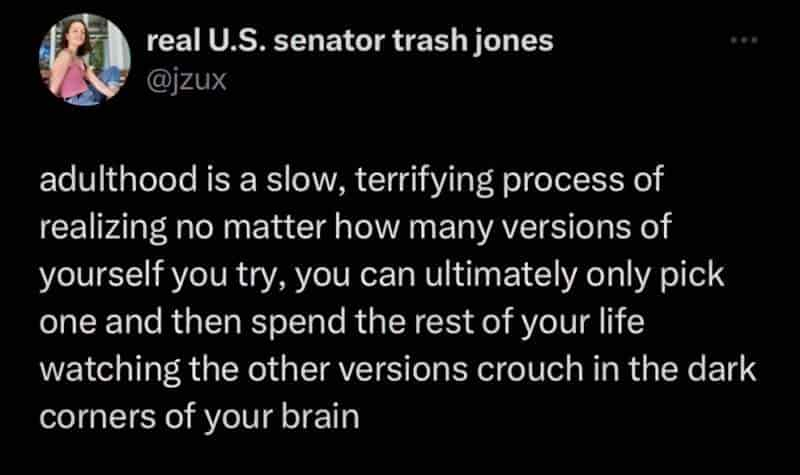
FURTHER READING
The Countryside and the City in Alice Munro’s stories “Fiction” and “Wenlock Edge” by Nadia Naddi
OTHER STORIES IN MUNRO’S TOO MUCH HAPPINESS COLLECTION
- “Dimensions” —
- “Fiction” —
- “Wenlock Edge” —
- “Deep Holes” —
- “Free Radicals” —
- “Face” —
- “Some Women” —
- “Child’s Play” —
- “Wood” also in the November 24, 1980 edition of The New Yorker
- “Too Much Happiness” —
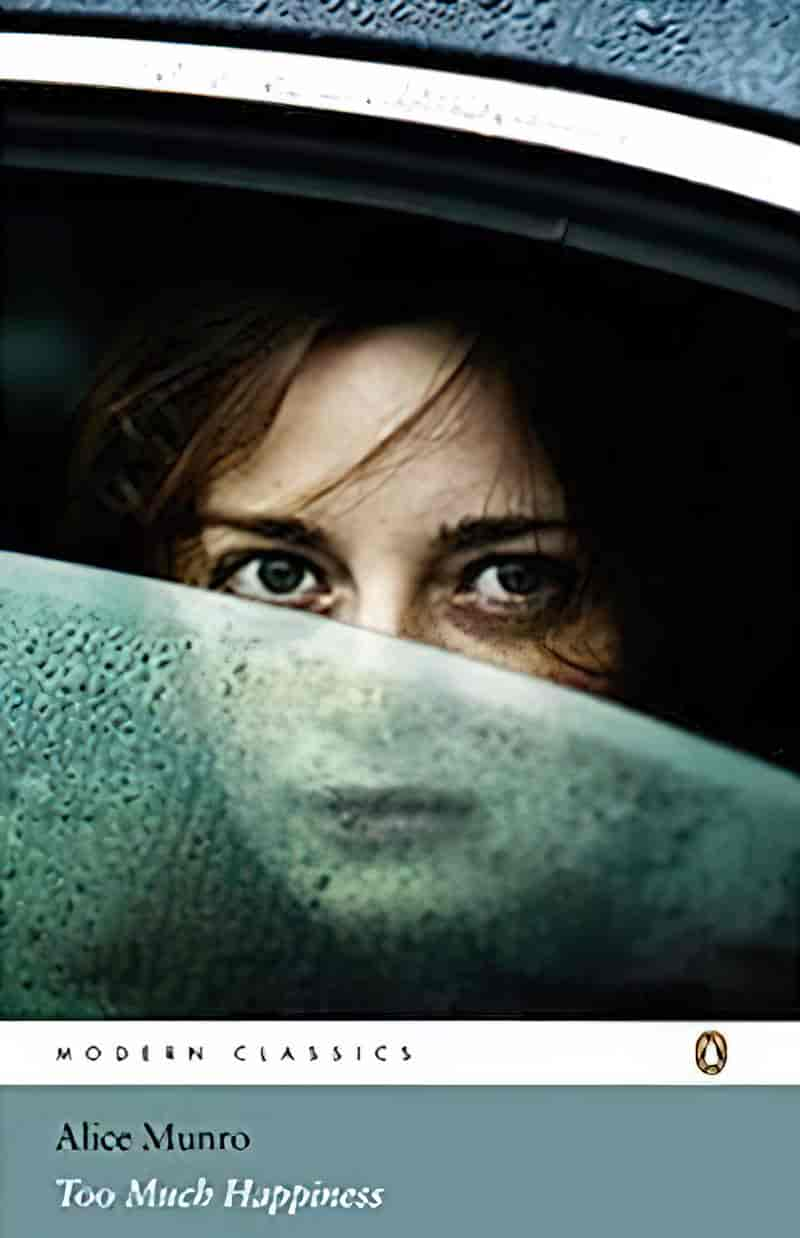
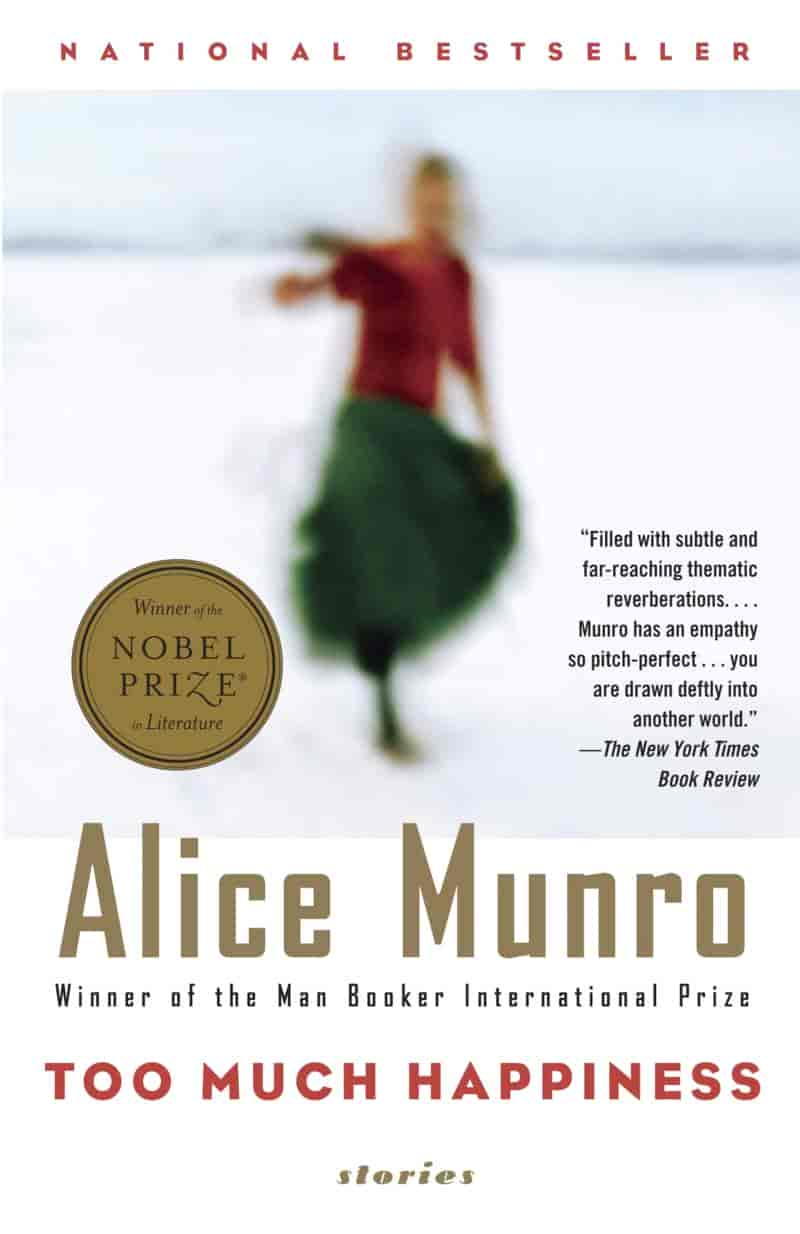
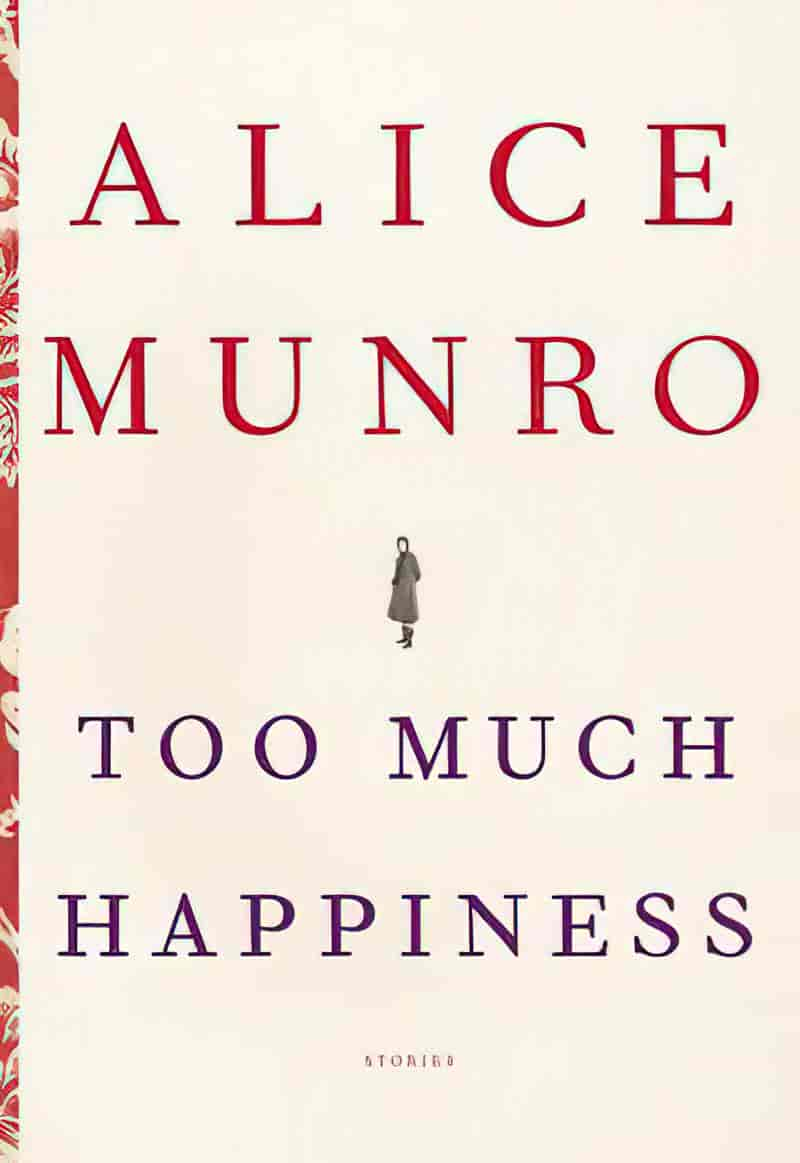
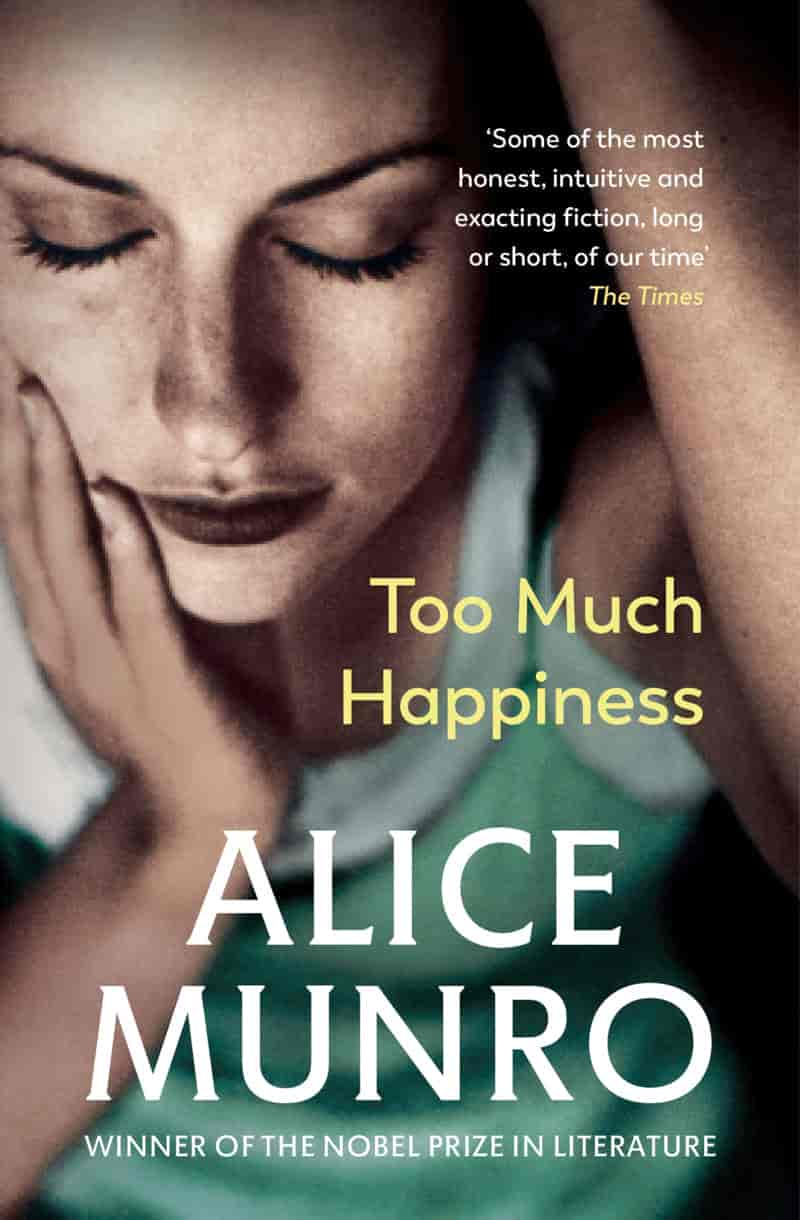
Header painting: Philip Calderon – Broken Vows
